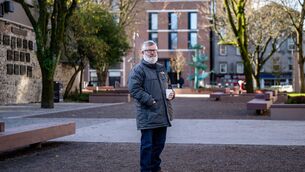Good and bad news on forestry
The land is on the eastern boundary of our newest National Park, around Ballycroy, which was established in 1998.
The National Park consists of one of the largest areas of unspoilt blanket bog left in western Europe and is also important for the conservation of salmon and sea trout because it contains most of the Owenduff river catchment. What amounts to an expansion of it, which will include much of Nephin Beg mountain, is welcome. Public consultations with local residents and land owners in the Keenagh area are underway.
But there is a background to this story which is not quite so positive. The reason Coillte is doing this is that the forestry in question has become a liability. The 4,000 hectares is planted with low-quality conifers. The cost of felling and extracting the timber in such a remote location would far exceed its market value. The problem is increased because when a plantation like this is clear-felled there is a legal obligation to re-plant it.
For over 100 years the State set annual planting quotas with the laudable aim of re-foresting Ireland and making us self-sufficient for timber. But the economics of forestry are always challenging because you’re planting a crop to be harvested in 40 or 50 years when market conditions are bound to be very different.
And the State has had a tendency to set ambitious planting quotas but to only provide enough money to buy the cheapest land, which was often very remote and not suitable for growing trees. There were also political considerations — state forestry on land that had agricultural potential was extremely unpopular with the electorate.
Many of the trees grew rapidly. This might seem like a competitive advantage but when conifers grow rapidly their annual growth rings are set further apart and this reduces the strength of the timber. Much of the product of Irish forests is only suitable for pulping.
The final nail in the coffin was the increase in global trade which meant timber could be imported cheaply.
A new wilderness area is a lovely idea but Coillte and the National Parks and Wildlife Service will have to come up with an imaginative solution about what to do with a very large number of value-less trees. A forestry plantation doesn’t have a huge amount of conservation value.













